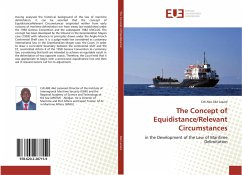Having analysed the historical background of the law of maritime delimitation, it can be asserted that the concept of Equidistance/Relevant Circumstances originated neither from early customs of maritime delimitation nor from treaty law established under the 1958 Geneva Convention and the subsequent 1982 UNCLOS. The concept has been developed by the tribunal in the Greenland/Jan Mayen case (1993) with reference to principles drawn under the Anglo-French Continental Shelf case. It is a judge-made law considered as customary international law. In the Greenland/Jan Mayen case, the Court, in order to draw a coincident boundary between the continental shelf and the FZ, assimilated Article 6 of the 1958 Geneva Convention to customary law, considering that both are intended to achieve an equitable result in the delimitation of two opposite coasts. Therefore, the Court held that it was appropriate to begin with a provisional equidistance line and then ask if relevant factors call for itsadjustment.








